Duplicate meta descriptions are meta descriptions that are the same for two or more pages on your website.
A meta description is an HTML tag that holds a short summary of a webpage’s content. Search engines like Google often use them to generate descriptive snippets in search results.
Let’s see what duplicate meta descriptions look like in practice.
This is an example of two pages on a single website having the same meta description.
But why are duplicate meta descriptions an issue?
Duplicate meta descriptions can have a negative impact on the user experience and click-through rates from search engine results.
When two or more pages have the same meta descriptions, users may not be able to figure out what kind of content they can expect on each page.
That can cause confusion among your potential website visitors and cause them to seek answers elsewhere—possibly on your competitors’ websites that are ranking on the same search engine results pages (SERPs).
That can lead to a lower click-through rate, a dip in organic traffic, and potentially harm to your brand’s reputation.
Let’s explore how to easily find and fix duplicate meta descriptions in four steps.
1. Find Pages With Duplicate Meta Descriptions
You can easily find pages with duplicate meta descriptions with Semrush’s Site Audit tool.
Let’s see how it works.
Go to Site Audit.
If you’ve never used the tool before, have a look at these configuration instructions to set up your first project.
Once your audit is complete, go back to Site Audit.
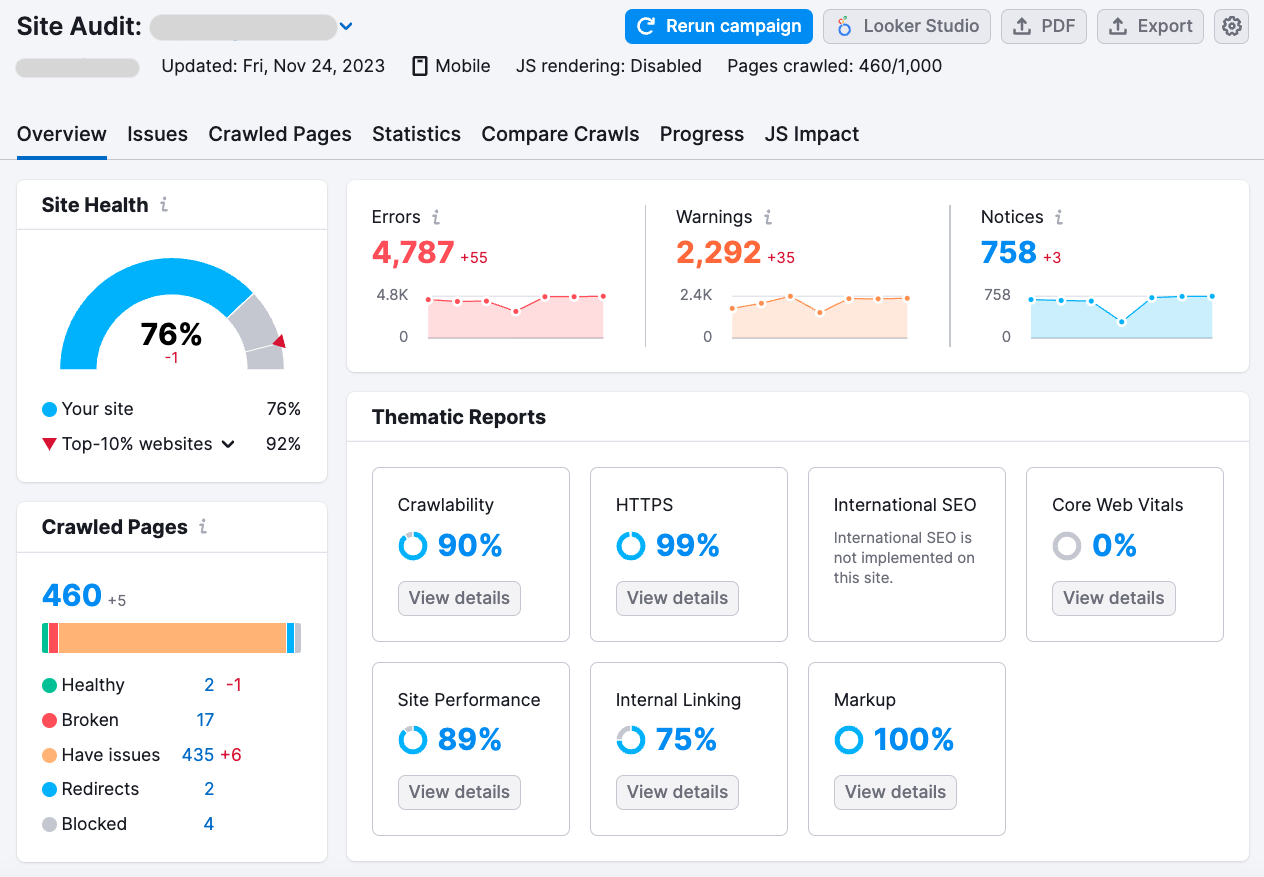
Click on the “Issues” tab.
You’ll see a list of all issues, warnings, and notices your website has.
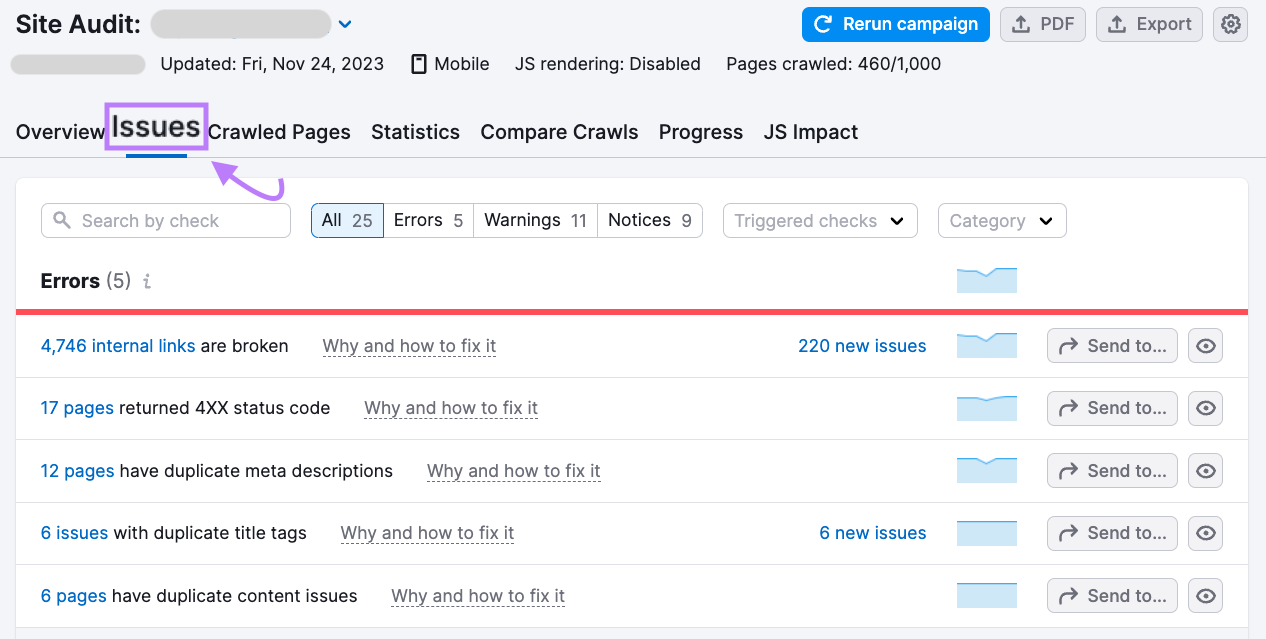
Type “duplicate meta descriptions” in the search bar.
Click on the “# pages” to see a list of pages affected by this issue.

You’ll see a list of all pages that have duplicate meta descriptions.
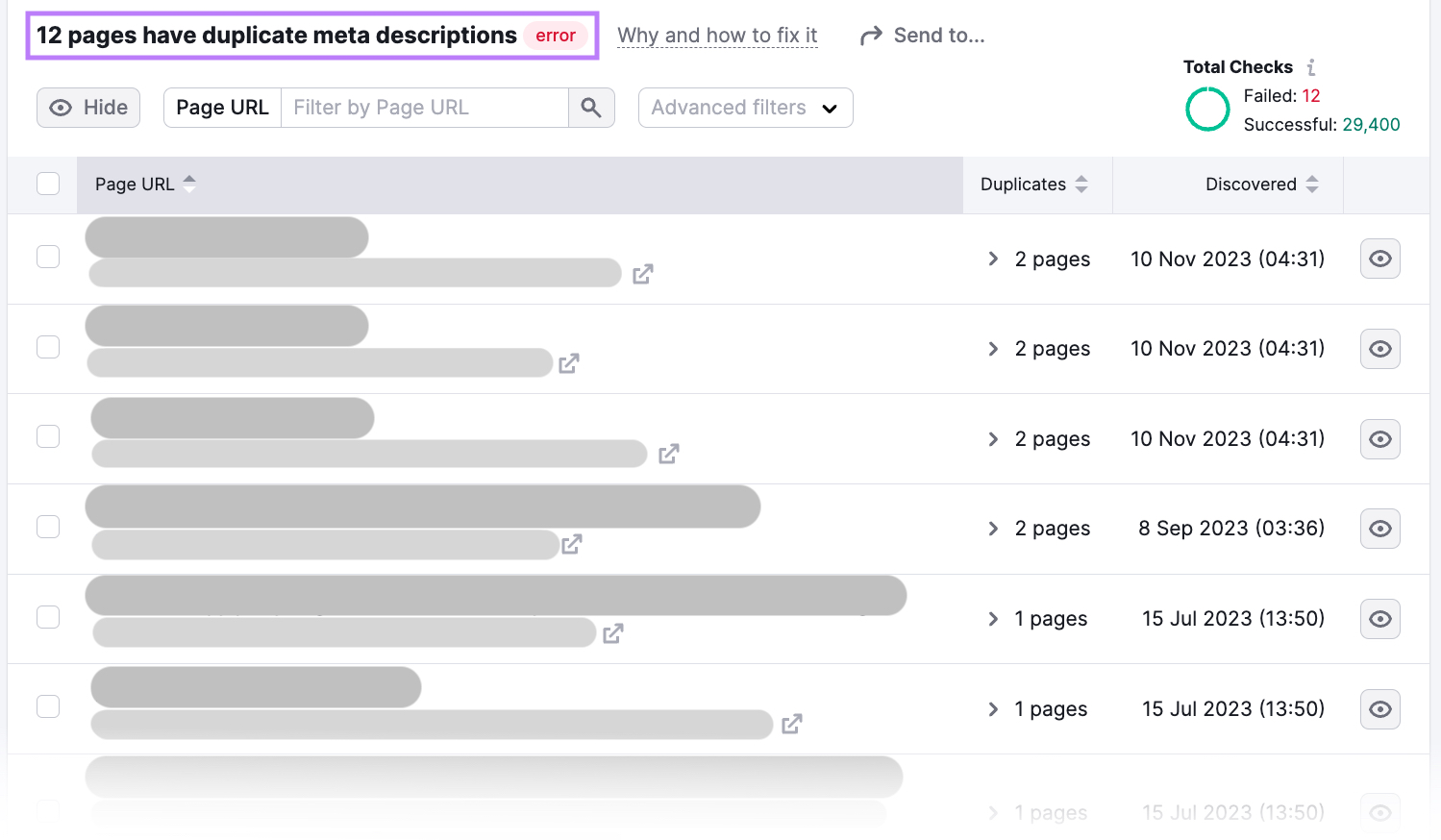
By clicking on the “# pages” next to each URL, you’ll see which other URLs have the same meta description as the one in the list.

2. Prioritize the Key Pages
If your website has a lot of duplicate meta description issues, it’s best to fix the key issues first.
The key pages to fix are those that have:
- High business importance: For example, sales landing pages with high conversion rates and/or pages that recently experienced a drop in traffic
- High search traffic potential: For example, pages intended to target keywords with high search volume that are seeing lots of impressions but relatively few clicks in search engines
Let’s see how you can find pages with high organic impressions and few clicks.
Go to Google Search Console.
Click “Full report” in the “Performance” section.
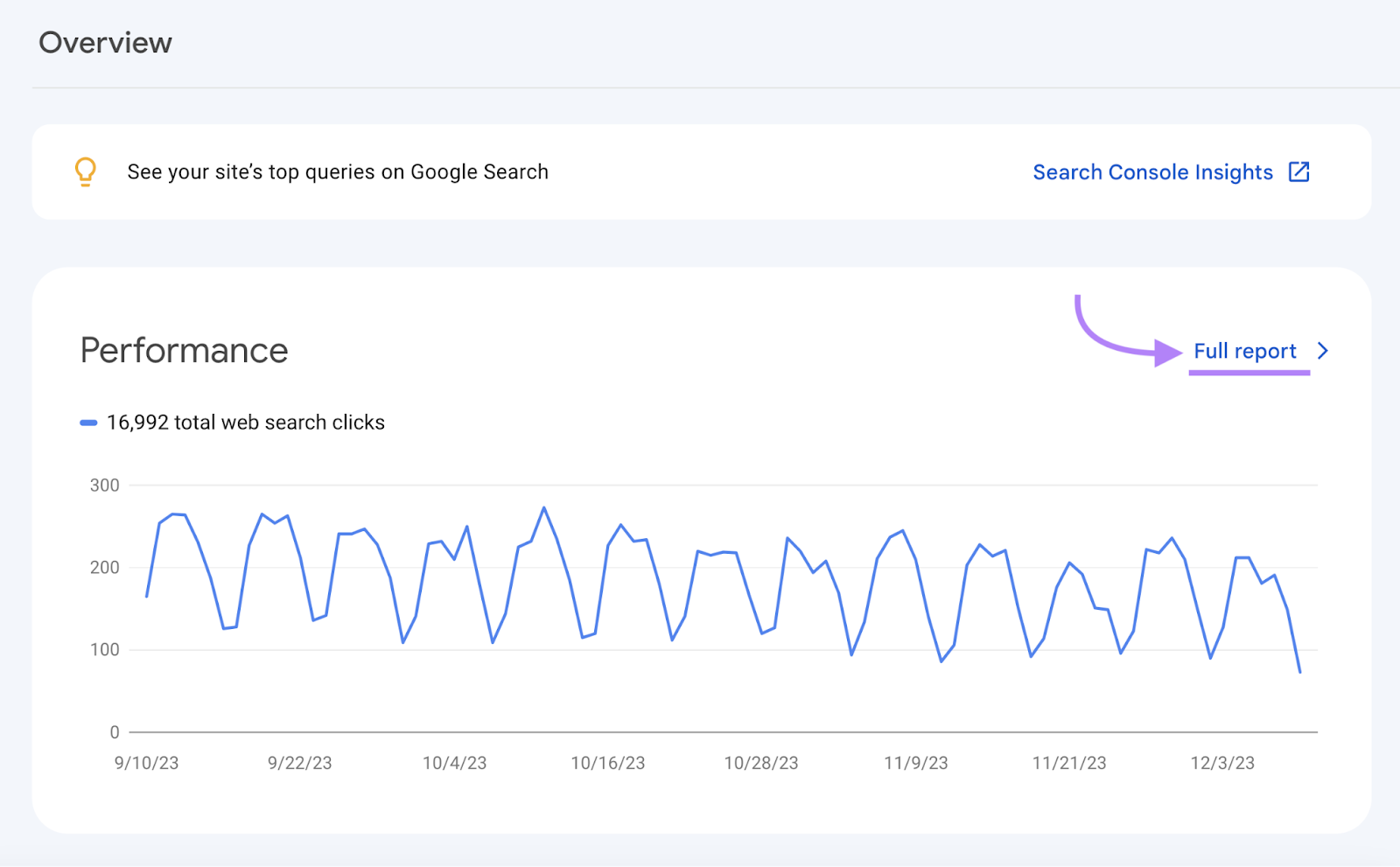
Click “Total clicks” > “Total impressions” > “Average CTR” to examine all three metrics at once.
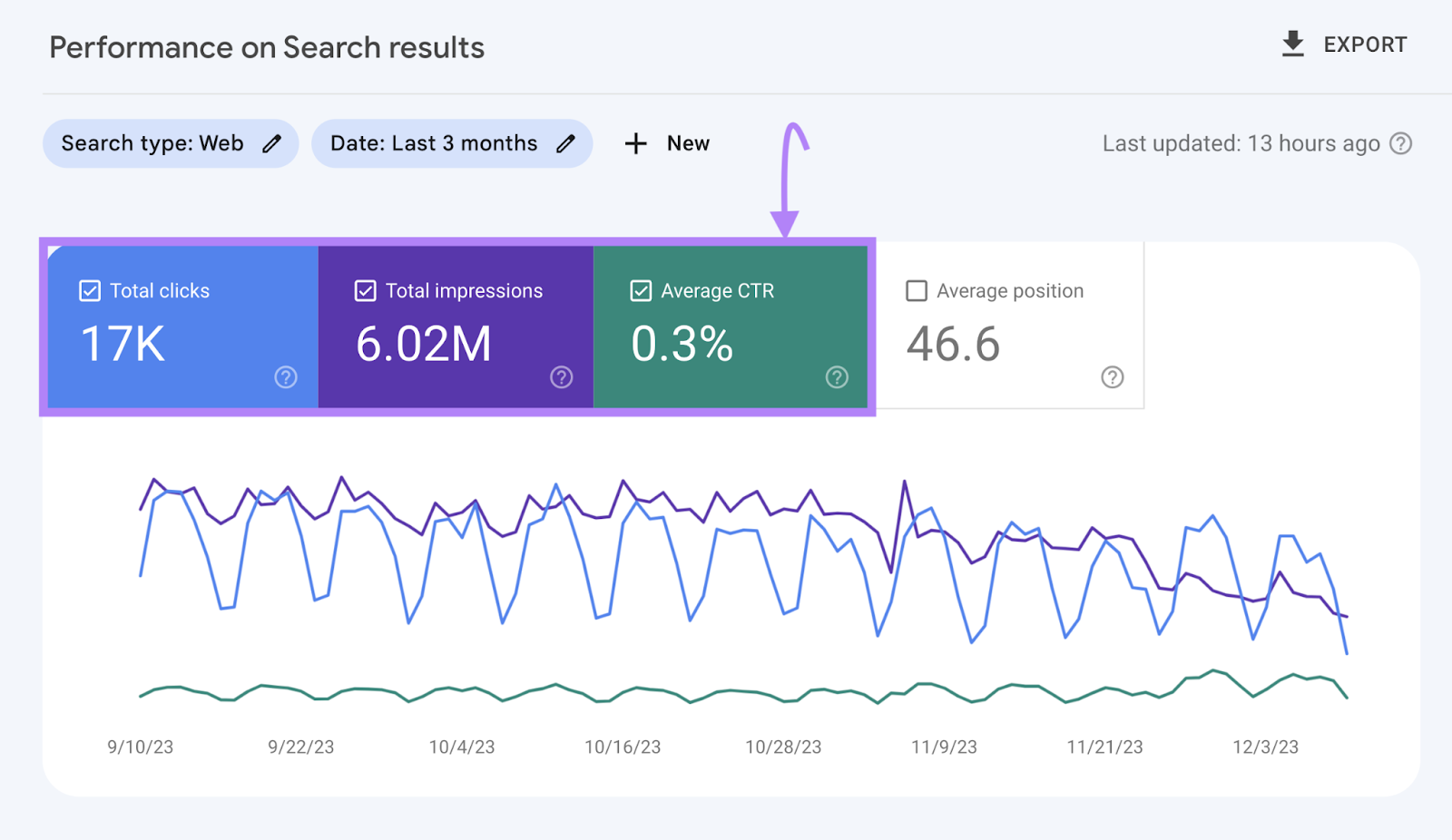
Scroll down to the list and click “Pages.”
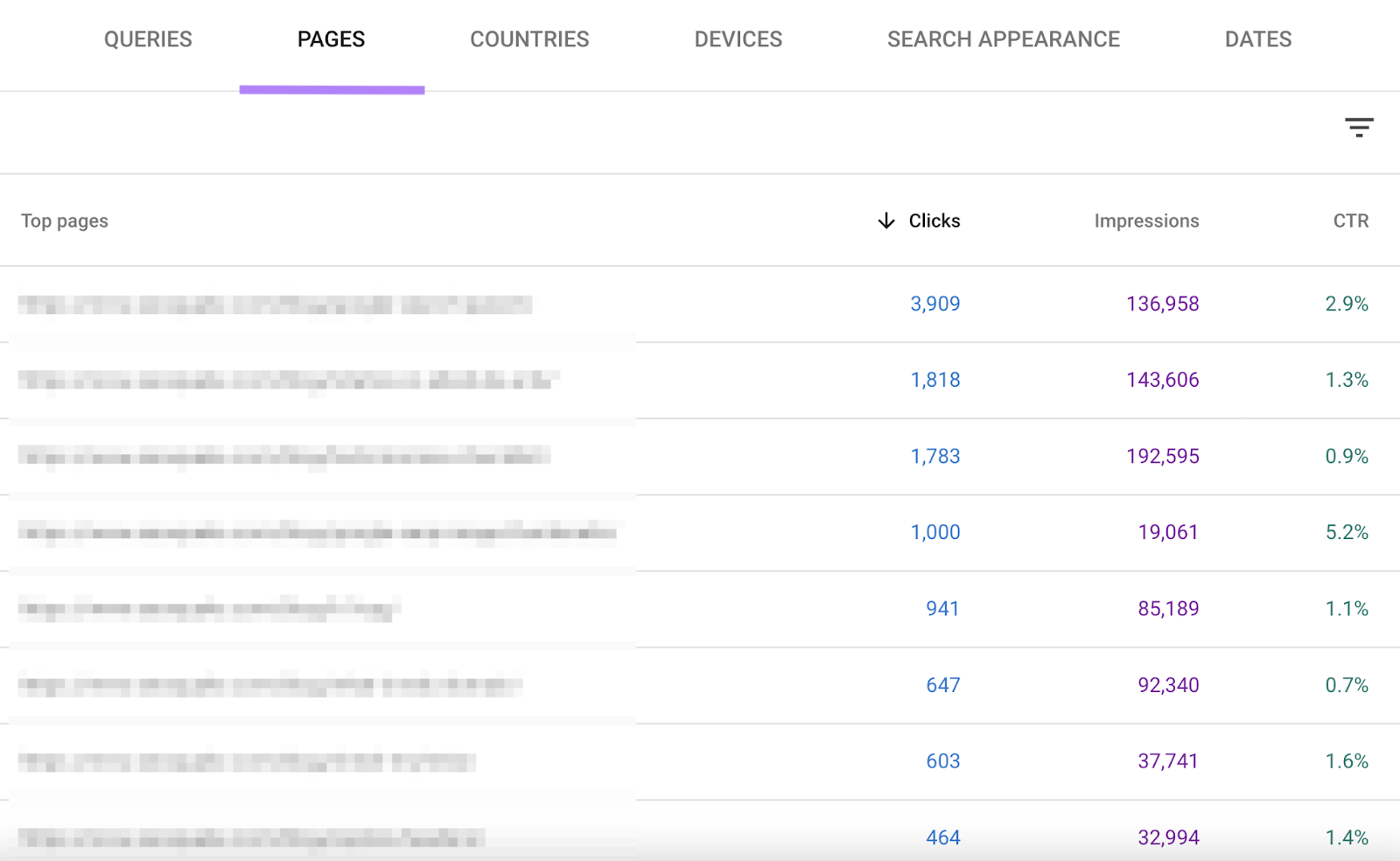
Double-click “CTR” to see low-performing pages.
On top of the list, you’ll see pages with the lowest CTR and high number of impressions.
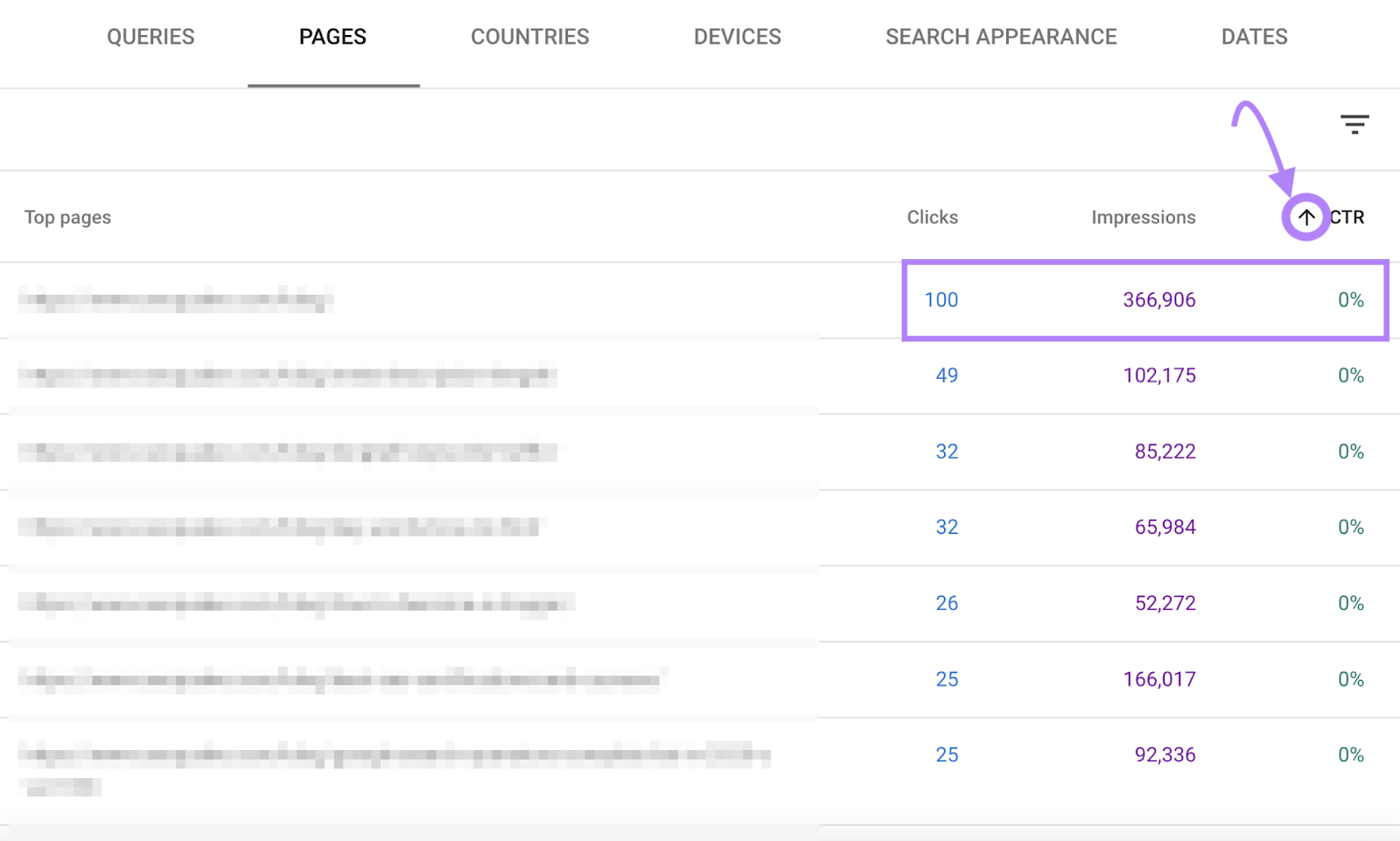
These pages are showing up in search results often. But users are choosing not to click on them.
By improving meta descriptions on these pages, you may be able to increase the click-through rate and organic traffic.
3. Create Unique, Descriptive Meta Descriptions
For each page you selected, write a unique meta description.
Let’s have a look at some of the best practices when it comes to meta descriptions:
- Include the primary target keyword. By doing that, you’ll let the reader and search engines know what to expect on your page.
- Answer the search intent. Reassure users they’ll find what they’re looking for on your page. For example, if someone is looking for “how to style crocs,”you can start your meta description with “learn how to style crocs…”
- Make sure it aligns with the content on the page. If something’s not on the page, don’t mention it in the meta description, as that will lead to disappointment and higher bounce rates.
- Keep it short. A meta description of 105 characters (680 pixels) will be visible on both desktop and mobile.
- Start with the key information: This ensures that the keywords appear even if a portion of the meta description gets cut off by Google.
Use meta description checker tools (like To The Web’s) to see what it’ll look like if it appears in the SERPs.
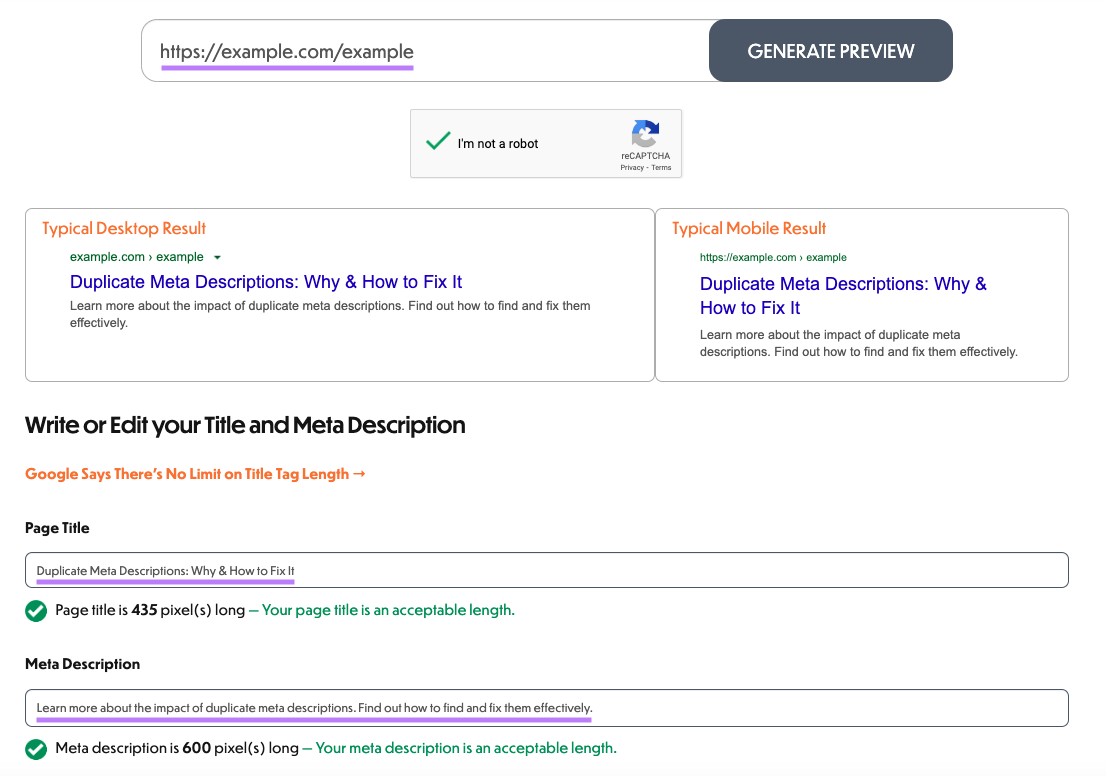
Further reading: How Not to Write a Meta Description
4. Update Meta Descriptions on Your Website and Monitor Changes
Once you create new meta descriptions, update them in your website’s content management system (CMS).
After you do that, you can re-run the Site Audit check to make sure you updated the meta descriptions properly.
Go to Site Audit.
Click “Rerun campaign.”
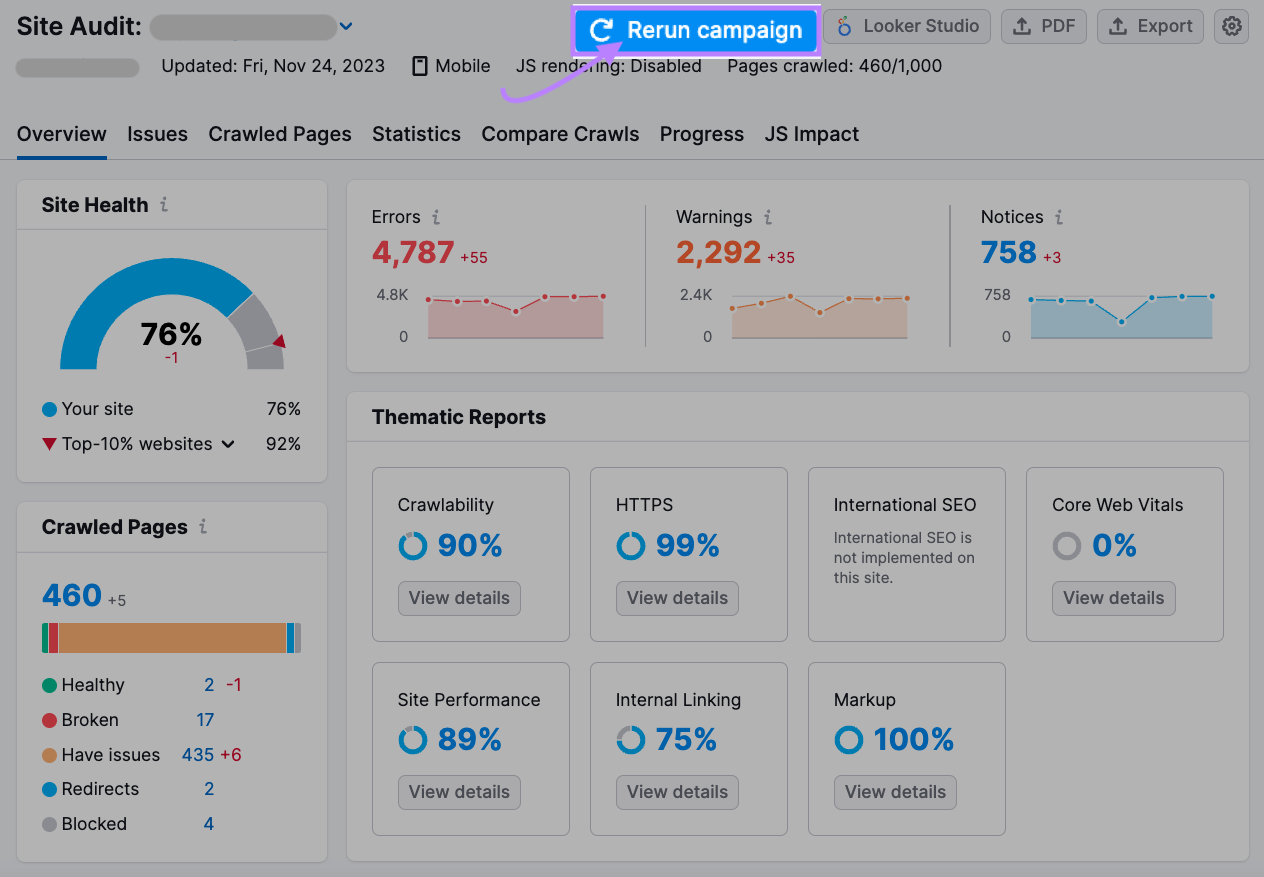
Once the audit is done, click “Issues” and search for “duplicate meta descriptions.”

The pages you updated should be absent from the report.
If some pages you updated still appear, double-check that you did everything correctly.
How Do I Fix Duplicate Meta Descriptions?
Use a tool like Site Audit to find pages with duplicate meta descriptions. Then, write unique, descriptive meta descriptions for each page and update them on your website.
Can You Use the Same Meta Description for Multiple Pages?
You should avoid this practice. The same meta descriptions for multiple pages can hurt the performance of your website in search engines. Google advises that you “create unique descriptions for each page on your site.”
Can a Page Have Multiple Meta Descriptions?
Multiple meta descriptions for a single page can confuse search engines. Which could affect how they display your content in SERPs.
Do Duplicate Meta Descriptions Affect SEO?
While meta descriptions are not a direct Google ranking factor, duplicate meta descriptions can cause issues with your organic click-through rate, which affects your organic traffic. When two or more pages have the same meta descriptions, users may not understand how they’re different and may choose to seek answers elsewhere.
Source link : Semrush.com
